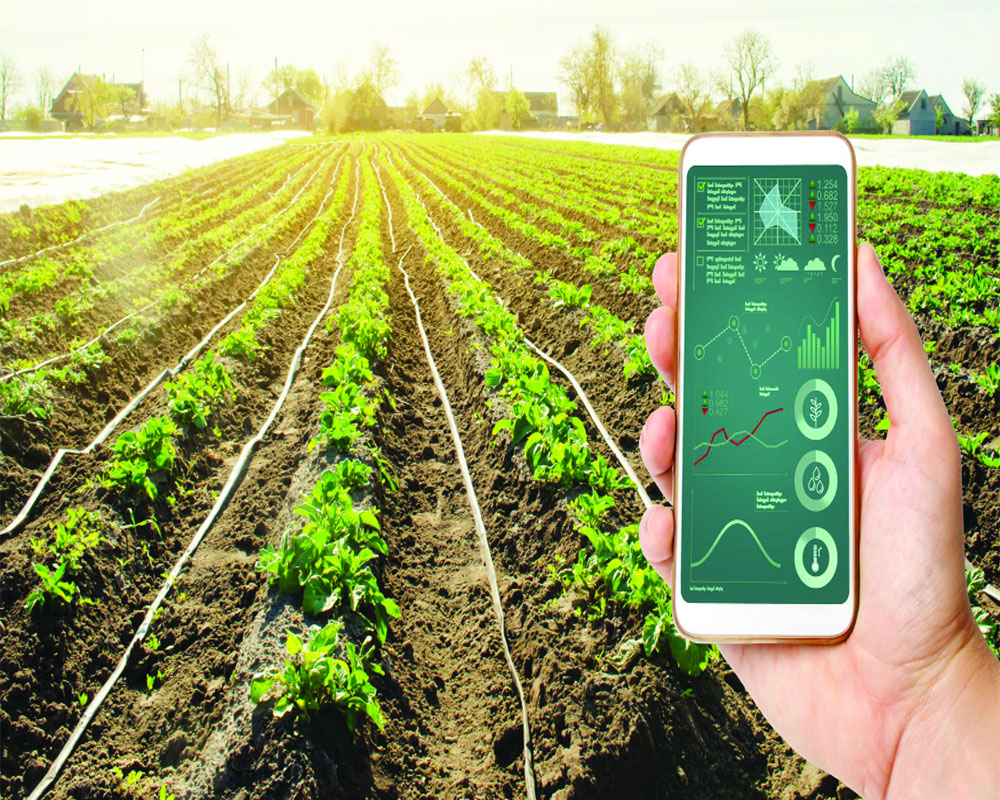It is an information and technology-based farm management system that involves extremely precise methodology to increase the average yield with minimal chemical use
The introduction of technology in the Indian agriculture sector occurred in a systematic manner during the Green Revolution. At that time, its aim was to attain self-sufficiency by increasing the overall yield. However, the goalpost was gradually shifted from food security to food safety in the last decade.
Extensive researches have revealed the direct impact of rampant adulteration on the health of consumers. At the same time, an expanding population means that food security can’t be ignored. Consequently, there is now a pressing demand for increasing food safety while ensuring that overall yields are not impacted.
Precision farming could offer a solution to these challenges by ensuring food safety in a planned and efficient way and by streamlining production in a sustainable and cost-effective manner. It involves an extremely precise methodology to increase the average yields with minimal chemical traces. An information and technology-based farm management system, it is employed to identify, analyse as well as manage spatial and temporal variability in agriculture. The main aim of precision farming is to achieve optimum productivity, efficiency, sustainability and protection of land resources by minimising production costs. It entails the usage of several disruptive devices and the smart application of big data to offer significant results.
Global Positioning System (GPS): A navigation tool based on the positioning of longitudes and latitudes, GPS allows farmers to locate the exact spot on the field for acquiring information such as soil type, pest presence, weed invasion, water holes, boundaries and obstructions. Additionally, with the help of reliable location identification, adequate inputs — seeds, fertilisers, pesticides or herbicides — can be supplied to the field, simultaneously boosting the overall performance of the farm and curbing the concerns of over or under supplementation of the crop.
Sensor technologies: Primarily used for measuring factors like humidity, vegetation, temperature, texture, structure, nutrient level, vapour presence, these technologies have multiple elements such as electromagnetic conductivity, photo electricity and ultrasound. The data obtained via remote sensing is used to differentiate crop species, pinpoint stress conditions, locate pests and weeds, monitor drought and check the health of both soil as well as of the plant. One of the main reasons behind the popularity of sensors is that they are time-saving, efficient and provide immense amount of data without the help of laboratory analysis.
Crop management: No two pieces of land are the same, nor are two regions within a field similar. Each portion has its own specific needs; some might have high nutritional content, while other parts might require less irrigation. Satellite data helps farmers in gaining an in-depth understanding of the variation in soil health and topography that affect crop yield within the field. With the availability of such information, farmers can precisely manage factors linked with production, thus simultaneously increasing the quality as well as quantity of the produce.
Yield monitors: A combination of various components, it includes sensors, data storage devices, user interface-friendly keypad and displays along with a central computing system that controls the interaction of all these elements. The grain flow sensors are used to measure the mass or volume of the grains. A recent development in these sensors has introduced the system of transmitting microwave energy beams to measure the portion of the energy that bounces back after hitting the seeds. Yield monitors also include devices that keep track of weight, moisture and other crucial parameters.
Rate controllers: These are devices that are meticulously designed to curb the presence of chemical elements such as fertilisers and pesticides, either in liquid or granular form. Their function is to keep a check on the speed of the sprayers used across the field. These tools even monitor the rate and pressure of liquid chemicals and make real time adjustments during the time of application.
Food safety has gained paramount importance in recent times. Consumers are opting for fresh fruits and vegetables, which are residue-free, organic or have minimal chemical content. Precision farming methods tend to benefit both the parties — the buyers and the sellers. As these procedures help in reducing the usage of fertilisers and pesticides, they make the product safe for consumption. On the other hand, it helps farmers draw optimum results from their resources. It enables them to enhance the quality and quantity of their output. It is safe to say that precision farming is the one-stop solution to numerous agrarian challenges faced by the country. Its thoughtful adoption will remarkably work towards streamlining the agriculture sector.
The writer is CEO and Co-Founder of Ninjacart. The views expressed are personal.


























